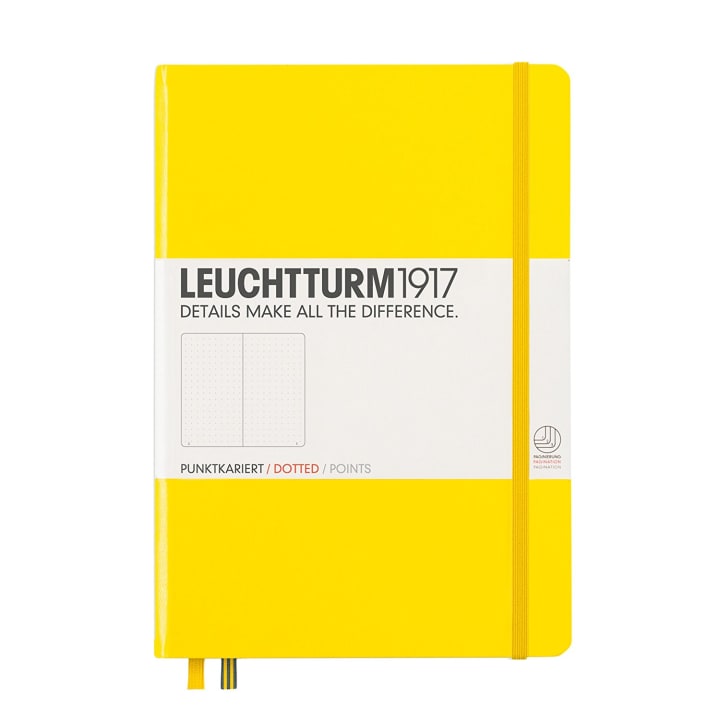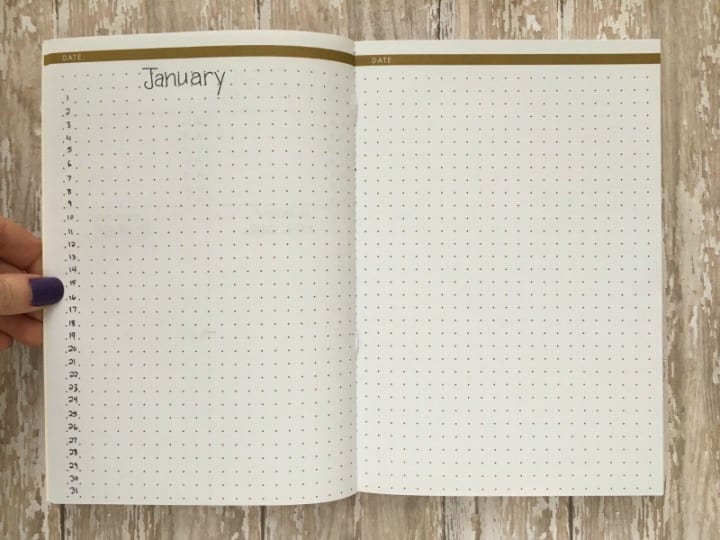
It was mid-December. I was on my bed, randomly scrolling through my YouTube recommended videos, until I finally saw something that caught my attention.
It was a 2019 bullet journal setup and January plan with me from Pypah's Art. I had no idea what I was looking at, but still, I sat through 21 minutes watching her create beautiful layouts, planning her life away.
That same day, I headed out determined to buy a bullet journal. I thought her pages were blank (since the video was too bright and the dotted grid was barely visible), so I settled for a cute notebook with blank pages that I found in Office Max. I also bought markers that would definitely bleed through the pages, and some washi tapes that I found on clearance.
I got home, sat on the bed, and followed her tutorial, stressing over the perfect lines and the theme that I had to follow (I ended up not following any theme and then freaking out about it). I had no idea what I was doing, no idea why my markers were bleeding through my pages and hers weren't, no idea why I didn't feel as productive as I thought I would feel.
If you still have no idea what a bullet journal is, let me help you. According to Ryder Carroll, the creator of the original bullet journal and author of The Bullet Journal Method, a bullet journal is "the analog method for the digital age." It is essentially a notebook that can be used as a to-do list, a journal, a tracker, and a planner, all at once.
The basics:

First of all, you'll need a notebook. You can go for lined, squared, blank, or dot grid, though dot grid is the most popular when it comes to bullet journaling, as it provides the structure to make straight lines/divisions while still giving you the freedom to get creative, as the dots are usually really light.

The yellow one is my favorite!
Leuchtturm notebooks are the ones with higher reviews, since the pages are thick and pre-numbered, the covers are durable, and they come in every imaginable color. You can check them out here:
The only downside to the Leuchtturm is that it is a bit pricey, especially for beginners, so if you're on a budget I would recommend one a bit more inexpensive like this one.
Now, let's move on to the pens and markers.
For pens, there are infinite choices. I would go for any gel pen and that's it. For markers, things get more interesting. You have to make sure that your markers don't bleed through the page (though if you buy a notebook with thick pages that's unlikely).
I recommend the crayola supertips. They come in every color, are flexible (you can even use them for calligraphy), and they don't bleed through pages.
The Method:
There are many ways to approach bullet journaling; I do recommend finding a way that works for you. The creator of the bullet journal, Ryder Carroll, says in his book that decorations shouldn't deviate you from the main goal—organizing your life, and keeping yourself accountable of your choices.
He uses simple symbols and methods, never mentioning themes or decorations or doodles or fancy lettering. If you want to incorporate any of these, fine, but if you don't want to or if you aren't good at any of these things, that shouldn't keep you from living your best life while bullet journaling.
You can create pages for anything, though the most common are:
- The key: it is basically a set of symbols that will help you identify certain entries (* for important stuff, > for something that was re-scheduled, < for something that falls out of the current month, - for notes, a dot for tasks, and X for completed tasks, and so on).

- Future log: is where you write out the months and leave some blank space for each one, where you will later add events such as appointments, birthdays, and so on. Here you write anything that falls out of the current month.

- Month at a glance: This is where you create a layout of the current month and write out any important events. You can reference to your future log while creating this, and migrate those events to your calendar.

Here's an example of a simple layout - simply write out the days of the month and write any events beside them!
- Weekly spreads: Here you write out the days of the week and any tasks or events under the specific dates. It's like an agenda, though you can create it to your liking, adding space for weekly goals or notes.

Trackers:
Trackers are my favorite thing about bullet journaling. You can create trackers for anything: your habits, your mood, your headaches, periods, medicines you're taking—you can even track books you've read and movies/series you've watched.
They keep you accountable of the things you're working on. You can track how many times you've gone to the gym, how many days you've eaten healthy, and so on.

Proof that you don't have to be super creative to track your mood!

This is how I track my habits: for each day, simply color the square if you did work on that habit that day.
I totally recommend reading The Bullet Journal Method, as it shows you that bullet journaling isn't about creativity or talent, but about accountability. It is a way of organizing your life.
You can check out the book here.
I really hope that you give bullet journaling a try, as it will change your life.
If you liked what you read, please share this with anyone who might find it helpful. And if you really really liked it, know that you can leave a tip!
See you in my next article,
-Alanis S.
I don't own the rights to any of the images used.






Comments
There are no comments for this story
Be the first to respond and start the conversation.